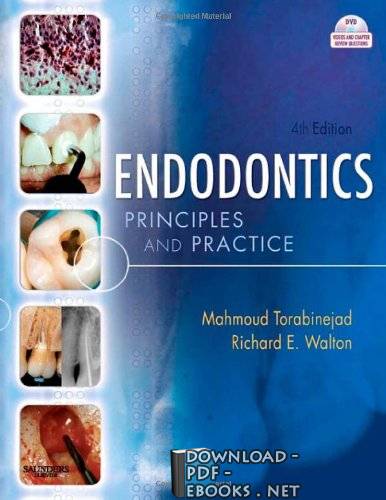📘 قراءة كتاب Endodontics Principles and Practice أونلاين


التعويضات السنية التركيبات وتشمل
الجسور الثابتة الجسور الثابتة والزرعات يزرع
الطقوم الكاملة المتحركة الكامل للإزالة أسنان
الطقوم الجزئية المتحركة بدلة جزئية قابلة للإزالة
معالجة و إصلاح الأسنان الجراحي طب الأسنان وتشمل:
تشخيص تسوس الأسنان تسوس التشخيص
الوقايه والحد من انتشار تسوس الاسنان إدارة تسوس الأسنان
تبييض الأسنان Dentalbleaching
تجميل الأسنان طب الأسنان التجميلي
حشوات الأسنان حشوات الأسنان
معالجة لب الأسنان علاج الجذور
معالجة الأسنان المجهرية حشو الأسنان المجهرية
طب الأسنان الوقائي طب الأسنان الوقائي
تقويم الأسنان تقويم الأسنان
جراحة الفم والوجه والفكين جراحة الفم والوجه والفكين
طب أسنان الأطفال طب أسنان الأطفال
أمراض اللثة
أمراض الأنسجة المحيطة بالأسنان اللثة
زراعة الأسنان زراعة الأسنان
أشعة الأسنان الأشعة الأسنان
طب الأسنان الشرعي طب الأسنان الشرعي
طب الفم طب الفم
أمراض الفم أمراض الفم
أنسجة الفم والأسنان الفم الأنسجة
المواد المادة السنية الأسنان
تشريح الأسنان تشريح الأسنان
مواضيع متعلقة بطب الأسنان
طب الأسنان للرضع
جراحة الأسنان
أسنان
أسنان طقم
طب الاسنان في الاردن
طب الأسنان في جميع انحاء العالم
مبادئ علاج الجذور وممارساتها
Mahmoud Torabinejad, DMD, MSD, PhD
Professor and Program Director, Department of Endodontics, School of Dentistry, Loma Linda University, Loma Linda, California
Richard E. Walton, DMD, MS
Professor, Department of Endodontics, The University of Iowa, College of Dentistry, Iowa City, Iowa
Copyright 2009 by Saunders, an imprint of Elsevier Inc.
SAUNDERS
Vascular Changes During Inflammation
When the dental pulp is injured, it responds in the same way as other connective tissues with a two-phase immune response.
The initial immune response is nonspecific but rapid, occurring in minutes or hours. The second response is specific and
includes the production of specific antibodies. Before the detailed nature of the immune response was known, the phenomena
associated with the response to tissue injury, including redness, pain, heat, and swelling, was known as inflammation.
Although much more is now known about the response to injury at the cellular level, these “cardinal signs” remain important.
Except for pain, they are all vascular in origin. Heat and redness are results of increased blood flow, and swelling results from
increased formation of interstitial tissue fluid because of increased permeability of the capillaries. In other tissues, such as skin
(in which inflammation was first described), the increased production of tissue fluid results in swelling. Because the dental pulp
is within a rigid, noncompliant chamber, it cannot swell, and the increased interstitial fluid formation results in an increase in
tissue fluid pressure. At one time, it was thought that this rise in interstitial fluid pressure would spread rapidly and strangle
vessels entering the root canal at the apical foramen. Closer study has revealed that this is incorrect. Elevations in tissue fluid
pressure remain localized to the injured area. A short distance from the injury, tissue fluid pressure is maintained within normal
limits. As interstitial fluid pressure rises, the intraluminal (inside) pressure of the local capillaries increases to balance this, so
that the vessels remain patent. During the response to injury, the gradients by which nutrients and wastes leave and enter the
capillaries change to allow greater exchange. At the same time these changes occur in the capillaries, lymphatic vessels
become more heavily employed, removing excess tissue fluid and debris. In addition, anastomoses in the microvascular bed
allow blood to be shunted around an area of injury, so that the oxygenation and nutrition of nearby uninjured tissue are not
compromised. If the cause of the injury is removed, these processes will gradually return the vasculature to normal, and repair
or regeneration can take place. If the injury persists and increases in size, this tissue will necrose. This necrosis can remain
localized as a pulpal abscess, although it more often spreads throughout the pulp.
The vascular changes seen in inflammation are largely mediated by local nerves. The sympathetic fibers through the
precapillary sphincters can alter the pressure, flow, and distribution of blood. Sensory nerve fibers release a number of
neuropeptides but most prominently calcitonin gene–related peptide (CGRP) and substance P. (These names are of historic
origin and unrelated to the function of these molecules in this setting.) The release of these neuropeptides comes about
through axon reflexes, whereby one branch of a sensory nerve stimulated by the injury causes the release of the peptides by
another branch. This mechanism, in which excitation of sensory elements results in increased blood flow and increased
capillary permeability, is known as neurogenic inflammation
طب اسنان كتب
كتب طبية باللغة العربية الشعبي
كتب طب اسنان مترجمة
كتب تقويم اسنان بالعربي
كتب طب الاسنان في مصر
كتب طب اسنان بالعربي الشعبي
البسيط في تقويم الأسنان الشعبي
كتب طب اسنان سنة اولى
تحميل كتب في تقويم الاسنان
حجم الكتاب عند التحميل : 28.1 ميجا بايت .
نوع الكتاب : pdf.
عداد القراءة:
اذا اعجبك الكتاب فضلاً اضغط على أعجبني و يمكنك تحميله من هنا:

شكرًا لمساهمتكم
شكراً لمساهمتكم معنا في الإرتقاء بمستوى المكتبة ، يمكنكم االتبليغ عن اخطاء او سوء اختيار للكتب وتصنيفها ومحتواها ، أو كتاب يُمنع نشره ، او محمي بحقوق طبع ونشر ، فضلاً قم بالتبليغ عن الكتاب المُخالف:
 قبل تحميل الكتاب ..
قبل تحميل الكتاب ..
يجب ان يتوفر لديكم برنامج تشغيل وقراءة ملفات pdf
يمكن تحميلة من هنا 'http://get.adobe.com/reader/'


 منصّة المكتبة
منصّة المكتبة